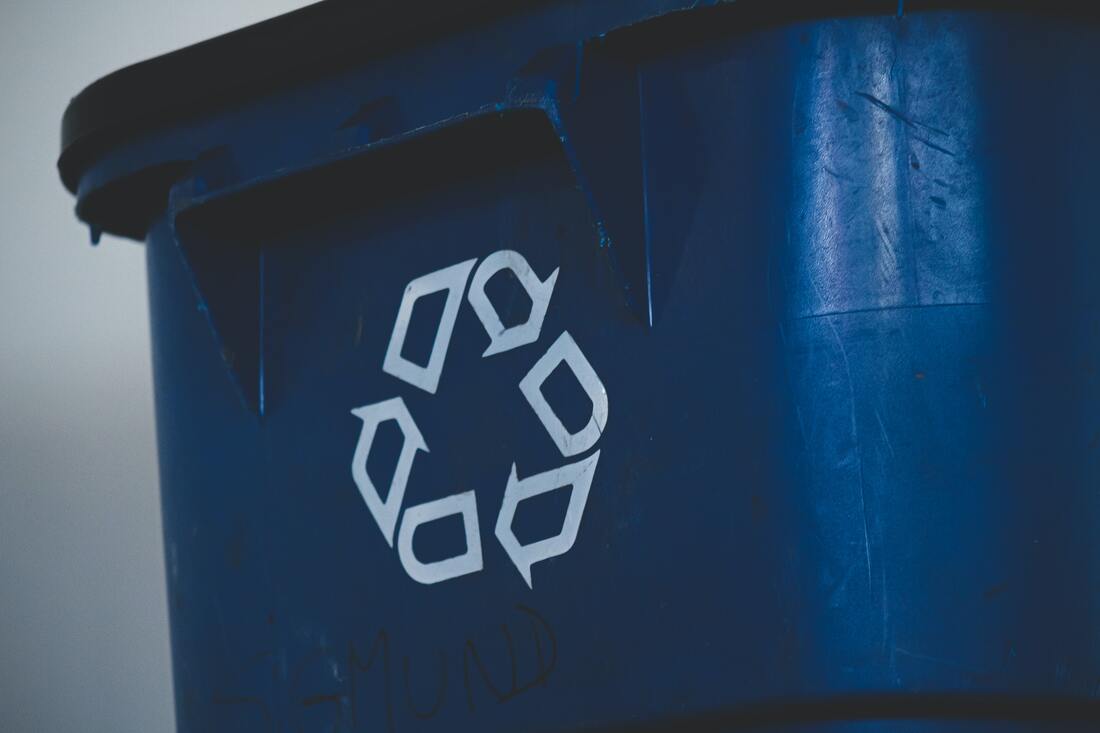|
Youth4Better Volunteers helped raise a total of $1,360 at the Language Link Educational Center in New York for Ukrainian families affected by the war.
The recent Ukrainian conflict has already resulted in 7.1 million displaced peoples within Ukraine and 3.7 million who have been forced to flee. By participating in this fundraiser, Youth4Better volunteers hope to be able to ease the lives of at least some of these families. We continue to accept donations for families and children that we can help directly, so you can be assured that your money will be send directly to people in need! Donations can be made using the "Donate" page. Youth4Better's Washington Chapter, directed by Joshua Jaiyeola, recently created handmade cards to send out to veteran homes during the holidays.
The effort was part of the Holiday Cards for Veterans Campaign, which has produced a total of 941 handwritten cards in 2021. The campaign aims to support veterans during the holidays, who are often living alone during these times of celebration. The Washington Chapter has been a part of Youth4Better since June of 2021 and has sense led and participated in several nationwide campaigns. We are thankful and proud of the work they have accomplished. We hope that these cards found their way to the meal trays of veterans on holidays, and hopefully, they will put smiles on the faces of these retirees. But most of all, we believe that this small act of kindness will make our volunteers better members of society who, by spending hours on creating these cards, recognize the sacrifice of these individuals. Shedding Light on the Damaging Ramifications of Children's Illiteracy on Individuals and Our Society9/25/2021 Photo by Jerry Wang on Unsplash
By Saanvi Gandham Although literacy is explicitly defined as the ability to read and write, its profound influence on children extends to all areas of life. Not only is literacy paramount to educational success, but it is also the basis of communication and relationships. Since reading and writing are globally predominant, literate children are more equipped to broaden their horizons and to be successful in adulthood. More importantly, literacy is firmly associated with psychological, social, and emotional development. Without confidence in reading, children and adolescents may have low self-esteem or feel detached from society. While striving towards literacy for everyone is crucial, the root of this issue may be the children that miss out on the chance to learn reading and writing. A child makes significant cognitive connections during their formative years, and the brain of a 3-year-old is twice as active as that of an adult, staying this way for the first ten years of life(The Literacy Project). Therefore, caretakers must stimulate the minds of their little ones and nurture literacy in children. Heartbreakingly, repercussions occur when the importance of reading remains unknown to a great deal of our population. If reading and learning are not encouraged during the early years, children from all over the nation, let alone the world, will face several challenges throughout their lives. What contributes to the problem? First, many families do not know about the detrimental effects of negligence on reading and illiteracy in children. Sadly, they substantially overlook the lifelong benefits of exposing their children to literature simply due to lack of awareness. A lack of computerized resources and educational material needed to learn reading also enlarges this issue. Poverty has strong links to illiteracy, along with factors such as home life and family history. Childhood illiteracy can be an intergenerational issue, as parents may not be as prepared to foster literacy in their children. According to the National Bureau of Economic Research, children of adults with low literacy skills are 72% more likely to have a lower reading level at school. In addition, attaining books is not feasible for many families living in poverty, outweighing basic living expenses. More than half of families in need do not have access to children's books(The Literacy Project). Gaps in reading achievement can also widen due to differences in demographics and economic background. Children from low-income families are proven to be more susceptible to falling behind academically, and by the age of three, there is a 30 million word gap between children of the wealthiest and poorest families(Reading is Fundamental). Summers can also be extremely disadvantageous to these children. More than 80% of children from economically disadvantaged communities lose their reading skills during the summer due to an absence of books, learning resources, and external enrichment. Furthermore, 68% of fourth-graders in America read at or below a proficient level, and 82% of those children are from low-income families(The Literacy Project). The Consequences of Illiteracy on Children in our Nation Without a solid footing in reading during their early years, children fall behind their peers when they officially begin their education. For example, 34% percent of incoming kindergarten children lack basic reading skills(Reading is Fundamental). Two out of every ten children start kindergarten one year behind, and two more begin with skills two to three years behind their grade level(Children's Reading Foundation). These children most often continue to stay behind throughout their education. More than 85% of the curriculum is taught through reading, and 74% of struggling readers will never catch up(Children's Reading Foundation). Additionally, a child is 90% more likely to remain a poor reader at the end of fourth grade if their performance is low by the end of first grade. Likewise, one in six children who are not reading proficiently in the third grade does not graduate from high 0school on time, a rate four times greater than that for skilled readers(The Literacy Project). Moreover, illiteracy can be a major indicator of whether adolescents graduate from high school or drop out. A staggering 1.2 million teens, or one out of six students, drop out of high school every year due to a lack of academic achievement(ProLiteracy). What's more, students who are behind at the start of kindergarten make up the largest group of school dropouts, having less than a 12% chance of attending college(Children’s Reading Foundation). On a more universal level, around 4.5 million young adults are “disconnected,” or not in school/employed(Measure of America). The Extensive Effects of Illiteracy on Society Childhood illiteracy can have adverse implications on adult life. Functionally illiterate individuals are often unable to develop professionally and undertake extended education. Their financial life is typically not secure, and they are prevented from reaching their full potential in all facets of life. Illiteracy also has a pernicious impact on society, being connected to increasing unemployment and incarceration rates. Approximately 225 billion dollars of losses in workforce productivity, crime, and unemployment substantiates this claim(Pro Literacy). From an economic standpoint, the growth of our national GDP slows as more adults become illiterate. Tangentially, illiteracy hinders civic participation and involvement in the community. Taking Action I am an avid reader, and I cannot even begin to fathom how much reading has affected my life. There is a certain beauty in the way that literacy provides the keys to support individuality and new perspectives, and it's rather captivating how the complexities and nuances of written language can thoroughly express a point. Every day, I am so grateful for the opportunities that I have been blessed with, as I acquired English as a second language early in elementary school and had access to rich resources during my childhood. This is why I sincerely believe that reading and articulation are doors that every child should be able to open. To make this a reality, all of us must try to do our part by acknowledging the problem, spreading awareness, and finding ways to help, whether small or large. One of the most promising things a parent can do for their child is actively interacting with them during the first five years of life, known as the preparation gap. Because a child's early learning experiences can shape their success in school and beyond, home is where exploration begins. By initiating conversations, listening to their stories, reading to them in the night, and even exposing them to various forms of art/music, a parent can help their child's reading and writing skills blossom. As mentioned before, one of the major issues surrounding illiteracy in children today is poverty. Without resources, guidance, and books at home, it becomes difficult to support a child in the endeavor towards well-being and academic success. We can take steps to overcome the deleterious influence of poverty on illiteracy by contributing to education and social-emotional support programs for low-income families, donating books, hosting book drives, fundraising for various organizations, assisting children one-on-one, and more. Ultimately, by educating ourselves on the issues that encompass illiteracy and the effects that follow, we can empower the children of our generation to achieve their dreams and visualize a brighter, more equitable future. Sources Consulted: Children and literacy 30 Key Child Literacy Stats Parents Need To Be Aware Of – Literacy Project Foundation Child Illiteracy in America: Statistics, Facts, and Resources | Regis College Childhood Illiteracy and Poverty in America Youth Disconnection — Measure of America: A Program of the Social Science Research Council School Readiness - Reading Foundation LITERACY FACTS & STATS Adult Literacy Research Photo by Sigmund on Unsplash
By Nagasiri Poluri To know how much the public is valuing recycling, I have researched in a prime area in Lisle for 1 hour. I researched the approximate number of beverage drink cups thrown in 1 hour. The data I have collected is 40 items. Though few stores use paper cups, some people are not recycling right, i.e they are throwing in incorrect garbage instead of the recycle dustbin. While some stores are still using plastic cups which are very harmful to nature. If people don't recycle right in this case using the wrong dustbins, the recycling machinery will be damaged and can cause delays. When they get mixed up, the value of the things that were sorted correctly reduces. In order to prevent it, using the right dustbins will help everyone to a great extent. Some other stores were using plastic cups instead of paper cups. Though plastic cups are recyclable, they are not recyclable quickly and are a burden to mother nature. They take years to decompose, where their toxic chemicals disproportionately harm people, environment and the wildlife too! The straws used are also making a huge impact on the environment, and living beings. The paper straws are acceptable, but plastic straws, like plastic cups take an eternity to decompose. They also sometimes are dangerous to aquatic life, because when they are not thrown appropriately, they get stuck in the wildlife’s noses and eventually die. There were thousands of cases where many turtles in the ocean died due to the plastic straws stuck in their nostrils. To avoid all this tragedy, I humbly request everyone to be responsible and recycle right. Youth4Better's California Chapter recently started a new campaign called Recycling4Better. The campaign aims to help our planet by reducing the amount of plastic going to waste by taking bottles to recycling centers and donating the profits to help with cancer research.
The campaign has donated its first 500 bottles within a month of its inception through the help of members and chapters nationwide. We hope that by encouraging recycling, we are able to save our planet, and that the profits raised will help save lives. We encourage our volunteers to participate in this incredible campaign in order to expand its impact. Photo by Perchek Industrie on Unsplash
By Nilay Bhavsar Swimming, running, sleeping, reading, and watching TV. All of these are activities that everyone enjoys, but what is common about all of them: they require function from the eye. Yes, believe it or not, even when we are sleeping, our eyes are active. During the sleeping process, our eyes undergo rapid eye movement, a period where the eye rolls around behind the eyelids causing the body to sooth and fall asleep. Now that we know how important the eyes are in our daily life, let's dissect each part and analyze why we can do these simple functions. The eye is made up of 4 photoreceptors, a pigment responsible for light conversion. In the eye, there are short-wavelength cones, medium-wavelength cones, and long-wavelength cones, with each corresponding to a specific color.The fourth photoreceptor is a rod, a structure used to determine black and white light and the transfer of that color. All of these pigments are very important in light conversion as without them, images wouldn’t be seen. These pigments are located in the main area/most important part of the eye called the retina. The retina is the main area of activity in the eye, where light is transferred and images are read. In addition to being the location of the photoreceptors, the retina is home to other nerve cells which receive/gather visual ideas. The retina uses this visual ideas/information and sends it to the brain, causing sight. The retina is in the back of the eye where the nerves and the fibers of the eye are connected to the brainstem and spinal cord. Without it, a disease called macular degeneration is formed where the brain will not receive any signals and can result in vision loss. Another fascinating and crucial part of the eye is the cornea. The cornea is the layer directly in the front of the eye. The cornea’s role in the eye is like a window to a house; it guards the eye and allows a certain amount of light to enter. The cornea is mostly water, with roughly three quarters of it filled with this liquid and the rest is composed of collagen. Collagen is the main structural protein in the human body. The iris is a fundamental structure of the eye and is just as important as the retina. The iris is the colored part of an eye’s inner cornea. Its role is to regulate the amount of light entering the retina by opening/closing the lens when necessary. Its regulation is the crucial part in helping the retina and the cornea send signals. If damaged, it can cause color blindness and results in shut eyelids, which can affect sleep. The eye is the body’s unsung hero, working behind the scene to help other systems. Without the eye, not only will our vision be lost but our other systems, like the nervous system, will be impaired. The eye is not only very important, it also is very complex, as the processes during night are perplexing. Photo by Jeremy Dorrough on Unsplash
By Ashley Cozayatl “Predators, aliens, criminals, and animals” are all words former President Trump used to discuss immigration in the US. They supposedly “ruin our nation” or “come to invade our country” however what he and his supporters don’t know is that we need and should appreciate immigrants as they help us grow as a nation. But we don’t need them. All they do is take our jobs and go to Taco Bell! According to an article in The New York Times, immigrants actually create more jobs than they take. For example, they create a higher demand for food, homes, and services that produce more jobs. Without immigrants, America “shrinks as a nation.” They contribute to the American population while Americans every year are having fewer and fewer babies. Why is a higher population important? The consequences Ms. Cohen (writer of NY Times article) helps us understand is that there would be fewer goods, fewer homes, fewer cars, and fewer services to sell to the American people. Award-winning artist and writer, first-generation Chinese and Cuban woman, Katarina Wong explores an article by PBS in 2018 that shows that “immigrants contribute more taxes than they use in government benefits, improves employment sectors, and shows that their children are more productive students/citizens.” Evidence of this is an article by the Times, showing how “even though immigrants make up 14% of the American population, they started a quarter of new American businesses, earned a third of Nobel Peace Prizes in the science department, and 60% out 25 of the biggest tech companies were founded by immigrants or their children.” Personally, coming from a first-generation daughter of immigrants, I am here to tell you that we aren’t coming to your country to “ruin it” or to take your jobs. Just like my family did, immigrants want to migrate here for a better life, for better opportunities, and a better future for their families. I will tell you I don’t know where I’d be now had my mom not come to America. The life of an immigrant is hard, coming into a foreign country without knowing the language, no pocket money, and most of the time, no family to go to. Then when you get settled in and make something out of yourself, you decide to apply for a green card with a clean background and taxes paid. Next thing you know you are back in the country you wanted to get away from, leaving everything you had behind. Being betrayed by the country that is supposed to be the greatest in the world, the land of opportunity, the home of the “free”. Immigrants are the core of our nation, they make us great, and once we all learn to accept it, we can actually be one united nation again. CITED ARTICLES: https://time.com/5594365/america-immigration-future-economic-growth/ https://www.thebalance.com/donald-trump-immigration-impact-on-economy-4151107 https://www.katarinawong.com/about https://www.miamiherald.com/opinion/op-ed/article233365297.html https://www.nytimes.com/2017/05/06/opinion/sunday/to-be-great-again-america-needs-immigrants.html https://www.nytimes.com/2019/08/22/business/economy/trump-immigration-employers.html Photo by Etienne Girardet on Unsplash
By Boris Salinas Today’s Standard Western diet consists of primarily animal ingredients such as dairy and meat. The demand for these products is extremely high and in order to fulfill this demand, we raise an average of 70 billion animals each year. This demand causes ethical, environmental, and health issues. Animal agriculture creates a lot of Greenhouse gases which causes global warming. These emissions cause the world’s ocean to become acidic overtime. Deforestation is also caused by this demand, since land is necessary for cattle grazing and animal feed crops. The manure produced by these animals is also a great cause of pollution. Healthwise, since animals are raised so close together bacteria and germs find it very easy to multiply, animals are fed antibiotics to combat these bacteria and germs. We then proceed to consume this meat and gain an antibiotic resistance over time. Food borne illnesses are also a major issue, on average, 3 million people will get food poisoning each year. Many people are choosing to replace animal produce with plant-based products. Companies such as JUST, Beyond Meat, and Impossible Foods are making different products in order to help deal with these issues. In the year 2011, scientists that work at Impossible Foods discovered the molecule behind the taste of meat. Along with this discovery it was discovered that the same molecule is essential for life, this molecule is Heme. The Heme in your blood takes oxygen from your lungs and distributes it in the body. Whenever you crave meat, in reality you crave Heme. Heme is extremely abundant in the muscle tissues of animals. These plant-based foods are also a lot less damaging to the environment. Whenever a plant-based burger is made, 99% less water is used, 90% less greenhouse gas emissions are released, 93% less damage happens to the earth, and 92% less water contamination occurs. With all the benefits that there is to consuming more plant-based foods, it's easy to say that not only are they healthier, but also safer. Overtime as the demand for food rises, we will be facing these same issues but to a higher scale. If we as a species who live on Earth don’t do something about the earth’s degradation, we will soon be left without a home. Photo by Isabella and Zsa Fischer on Unsplash
By Leonid Nevezhin Sleep is incredibly important to the human body, but many individuals neglect that. You must sleep in order to avoid all the problems and negative health benefits that happen and can happen as a result of not enough sleep, or sleep deprivation. This essay is divided into three sections. The first is called “Randy Gardener”, and contains two examples of what lack of sleep causes and can cause. “What happens if you don’t.”, is the second section, and discusses the negative health effects associated with sleep, how exactly they are a result of sleep deprivation, and what these negative health effects would mean to you. The last one is called “How to fall asleep.” and contains ways that you can fall asleep faster and how you can make it easier for yourself. Randy Gardner. Sleep is essential to us as humans. It gives our body energy and time to replenish. First, let’s talk about how long a person can go without sleep. The current record-holder is Randy Gardner, who stayed awake for 11 days, 264 hours, without sleep back in 1964. In 2017, he did an interview with WBUR-FM, a radio station run by Boston University, and told his story. After about 2-3 days of not sleeping, Randy began to feel nauseous. At about day 4-5 he had a hard time remembering things and answering questions. “I mean, it was crazy where you couldn’t remember things. It was almost like an early Alzheimer’s thing brought on by lack of sleep”, he stated. Gardner also said that the longer he stayed up, the more irritable and agitated he got. “I had a very short fuse on day 11. I remember snapping at reporters. They were asking me these questions over and over and over.”, Randy recalled in the interview. After staying up for exactly 11 days, as he originally planned, he dropped into bed and slept for 14 hours. At the time, everything was fine. He awoke after 14 hours of sleeping and felt perfectly normal, as he did for the next 50 years. Then, the feat came back to haunt him. When he was in his late 60s, Randy and Ilona’s cat, George, died. “... and I was so upset that the vets didn't catch it, that they never looked in her mouth to find this tumor, that they blamed every other thing. And then she died, and I was so wracked with guilt…”. This moment, accompanied with Gardner’s ancient stunt, triggered it. Randy Gardner was diagnosed with insomnia. “I could not sleep, I would lay in bed for five, six hours, sleep maybe 15 minutes and wake up again.” Gardner also became incredibly agitated and was “awful to be around”. Scientists and researchers couldn’t figure out why this happened to him but Randy called it karma. He wasn’t the only one who suffered serious consequences. One of the people that inspired him to do this challenge in the first place was Peter Tripp, a radio DJ who stayed awake for 7 days. “In the months that followed, Tripp seemed unable to recover his center of gravity. He fought with his boss and lost his job. He ended up as a salesman, drifting from town to town across America Those that knew him well were convinced that those eight days without sleep had left him permanently damaged”, was the statement of one of the psychiatrists that monitored Peter during his wake-a-thon. Days after Randy finished his challenge, Guinness World Records released that it would no longer accept or support records related to sleep because of the related health risks. What happens if you don’t. Obviously, you won’t stay awake for 264 hours. But what happens if you have an irregular sleeping schedule and don’t get the sleep required by your body to function as it should?
- Heart attacks - which occur to over 1 million Americans each year, and even if you survive it (82% chance), it can still lead to tissue death that results in lasting damage to the heart muscle. - Heart failure - which about 6.5 million Americans suffer from, was the cause of 1 out of every 8 deaths in 2017, and leads to an estimated national loss of $30.7 billion. - Irregular heartbeat (heart palpitations) - makes your feel as if your heart is beating too hard, too fast, skipping a beat, or fluttering. They can be bothersome or frightening and can sometimes be a sign of a more serious heart condition.
How to sleep. Lastly, let’s discuss how you can fall asleep and how you can make it easier for yourself.
Sleep. I sincerely hope that after this that you understand the consequences, and will at least try to sleep more regularly and enough. Humans need an average of 8-10 hours of sleep. Less than 7 is not enough and more than 10 is too much. It is recommended that as teens, and are still growing, we receive 9 hours of sleep a night. Also yes, I am aware that not all of these consequences are certain, but some have a much greater chance of happening than others and some are actually certain. In conclusion: sleep. |
Archives
September 2022
Categories
All
Disclaimer
The opinions and views expressed in this blog are those of the authors and do not reflect the views, opinions or standpoints of Youth4Better. Any content published in this blog is not with the intent of harm towards any religion, ethnicity, race, organization, club, society, individual, or anyone or anything. |
Youth4Better
- Home
-
Campaigns
- Summer Camp
- Veteran`s and Memorial Day
- Westchester County Pitch in For Parks
- Repurpose Right
- Peer Mentoring
- Branches of Joy Christmas Tree Contest
- Self-Expression through Masks
- Heritage Revival
- Recycling 4 Better
- Holiday Cards for Veterans
- Assimilation campaign
- ECO awareness ambassador
- Hope 4 Immigrants
- Health4Better
- Care Packages For Heroes
- Youth 4 Ukranian Kids
- Clean Ocean Awareness
- Humanitarian Aid for Ukraine
- Team Members
- Blog
- Join Our Team
- Submit Hours
- Donate
cONNECT WITH US
|
YOUTH4BETTER, INC, is a 501 (c)(3) nonprofit organization registered in the state of new yorkALL RIGHTS RESERVED @YOUTH4BETTER 2019-2021
|






 RSS Feed
RSS Feed


